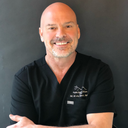Posted underBreast Implants q&a
Why does Europe primarily use textured implants whereas the US still primarily uses smooth?
Why does Europe primarily use textured implants whereas the US still primarily uses smooth? Sorting out the pros and cons and it is interesting to be that we differ in our preferences.
Answers (10)
From board-certified doctors and trusted medical professionals
Dr. York Jay Yates, MD

Dr. York Jay Yates, MD
Board Certified Plastic Surgeon
Answer
Dr. Larry S. Nichter, MD, MS, FACS

Dr. Larry S. Nichter, MD, MS, FACS
Board Certified Plastic Surgeon
Answer
Dr. Urmen Desai, MD, MPH, FACS

Dr. Urmen Desai, MD, MPH, FACS
Board Certified Plastic Surgeon
Answer
Dr. Robert Singer, MD
Dr. Robert Singer, MD
Board Certified Plastic Surgeon
Answer
Dr. Tom J. Pousti, MD
Dr. Tom J. Pousti, MD
Board Certified Plastic Surgeon
Answer
Dr. Terrence Murphy, MD
Dr. Terrence Murphy, MD
Board Certified Plastic Surgeon
Answer
Dr. Robert S. Houser, DO
Dr. Robert S. Houser, DO
Board Certified Plastic Surgeon
Answer
Dr. Jon A. Perlman, MD (retired)
Dr. Jon A. Perlman, MD (retired)
Board Certified Plastic Surgeon
Answer
Dr. Ronald V. DeMars, MD (Retired)
Dr. Ronald V. DeMars, MD (Retired)
Board Certified Plastic Surgeon
Answer
More Breast Implants Questions
See all Breast Implants Q&AWE SEND PRETTY
EMAILS
What’s trending? Who’s turning heads? Which TikTok myths need busting? We’ve got you. No fluff, no gatekeeping—just real talk. Get our free, unfiltered newsletter.
